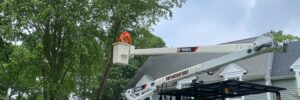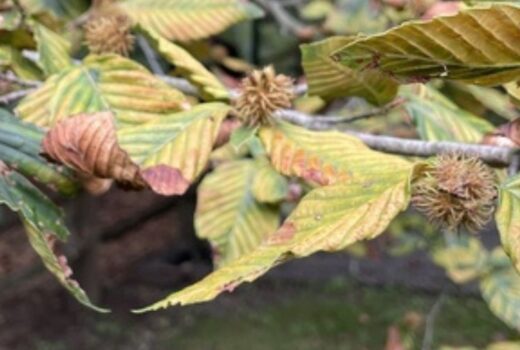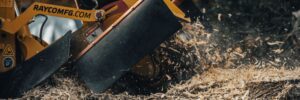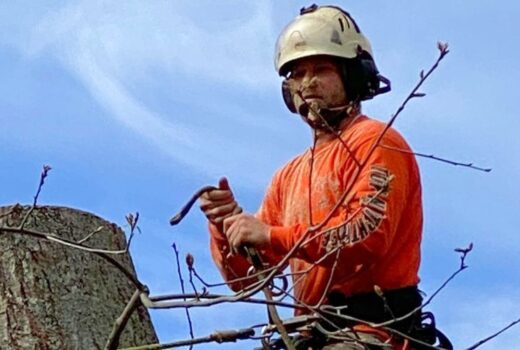Spring on the South Shore of Massachusetts brings warmer weather and the perfect opportunity to care for your ornamental trees. Whether you’re in Duxbury, Hanover, or Scituate, when you understand how and when to prune your ornamental trees, you’ll have the most beautiful spring blooms and fall colors on the block!
Let’s look at spring pruning and care for three of the most common ornamental trees on the South Shore of Massachusetts:
- Eastern Redbud
- Japanese Maple
- Flowering Dogwood
Keep reading to learn the best pruning practices for the region’s common ornamental trees from our tree pruning experts at Top Notch Tree.
In a Nutshell
- Ornamental trees are decorative trees planted for their aesthetic features, like flowers and unique shapes, to enhance the beauty of landscapes on the South Shore.
- Regular pruning helps maintain your ornamental tree’s structure, promotes strong growth, enhances flowering and fall color, and prevents disease and decay.
- Choose when to prune your ornamental trees based on what you’re trying to accomplish. Different tree species benefit from pruning at different times, but pruning in early spring before new growth begins is usually best for tree health because it aids in sealing cuts and encourages rapid healing.
What are ornamental trees?
Ornamental trees are special types of trees that you plant for decorative purposes in your garden or around your property. Unlike trees grown for fruit or wood, these trees stand out for their eye-catching features, such as colorful flowers, unique leaves, interesting shapes, or vibrant fall colors. They also tend to be smaller than most other trees such as oaks, pines, and maples.
You’ll often see them in local parks, along streets, or in neighbors’ yards, adding beauty and character to the landscapes in our area. They’re a great choice if you want to enhance the visual appeal of your outdoor space.
3 Common Ornamental Trees on the South Shore
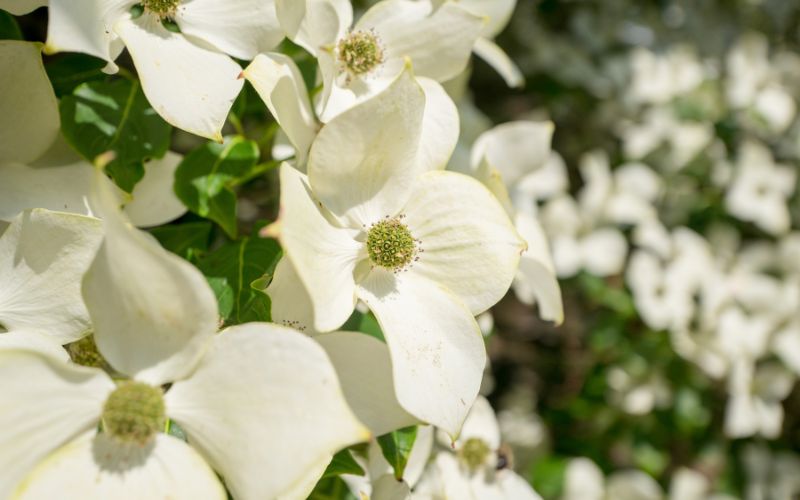
Flowering Dogwood in bloom
Flowering Dogwood
The Flowering Dogwood (Cornus florida), famous for its spring flowers, grows 20-30 feet in height and width. This Massachusetts native is happy in the sun or light shade and likes soil that drains well.
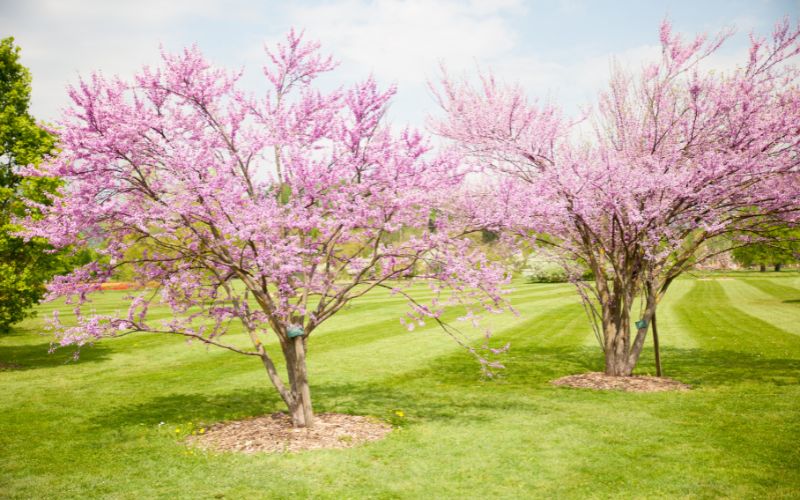
Eastern Redbud in bloom
Eastern Redbud
The Eastern Redbud (Cercis canadensis), can reach up to 20-30 feet in height and width. It features heart-shaped leaves and pink flowers that appear on stems and branches in early spring before leaves emerge. If you are going to plant one of these beautiful trees, look for a spot in your yard with partial to full sun and well-drained soil.
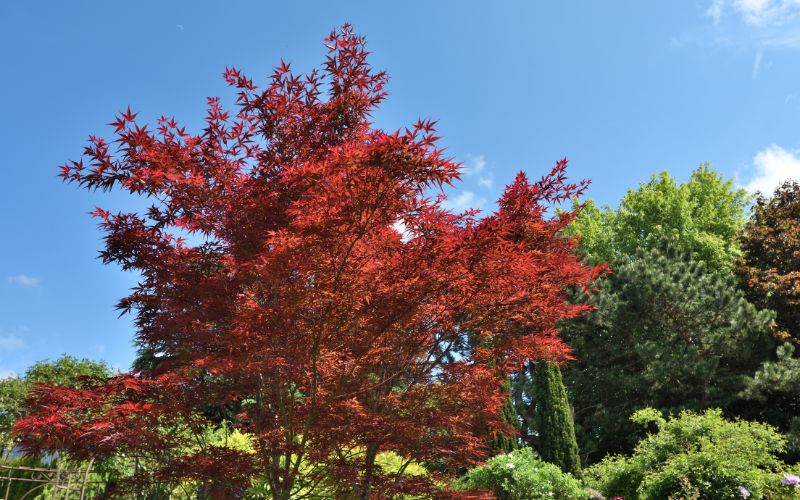
Japanese Maple in Fall
Japanese Maple
The Japanese Maple (Acer palmatum) is a diverse tree growing 15-25 feet tall and wide. It thrives in partial shade with moist soil. The Japanese Maple is best known for its most beautiful, fiery red and orange leaves in the fall.
The Importance of Proper Ornamental Tree Pruning
Proper pruning plays a vital role in maintaining the health and appearance of your ornamental trees. Pruning isn’t just about cutting away branches and leaves. It’s about strategically shaping your trees to enhance their natural beauty and ensure their longevity. Plus, when pruning is done correctly and at the right time, you’ll also improve flowering, fruiting, and foliage color.
When to Prune Ornamental Trees
The best time to prune most ornamental trees in Massachusetts is during late winter or early spring, just before new growth starts.
Pruning your trees during this time is essential for several reasons. First, it allows you to remove any dead or diseased branches that could compromise your tree’s health. Second, it allows your tree to heal its wounds more quickly, as the new growth in late spring will help seal the pruning cuts.
So, before the spring season hits, take the time to examine your trees. Decide which branches need to go and which ones should stay. And remember, a well-pruned tree is beautiful, healthier, and more robust.
Flowering Dogwood Maintenance
Maintaining your flowering dogwood involves regular pruning to enhance the tree’s natural beauty and health. Pruning is best done in late winter or early spring before the tree starts to leaf out. This timing reduces the risk of disease transmission and allows you to see the tree’s structure easily.
Start by removing any damaged, diseased, or dead branches. Cut them back to the nearest healthy wood, ensuring a clean cut that doesn’t tear the bark. Also, check for crossing branches. These can rub against each other, causing wounds and inviting disease. Cut off one of the crossing branches to prevent this.
Next, look for branches that are growing at awkward angles and remove them. This encourages the tree to develop a strong, balanced structure. Don’t go overboard. You should remove only about one-third of the tree’s branches each year.
Caring for Eastern Redbud
Take good care of your redbud tree by protecting its branches, which can break easily due to their length and sideways growth. In late winter or early spring, the Eastern Redbud requires minimal but careful pruning to avoid uneven branching and keep the tree strong. Cut off branches that form a narrow V-shape to prevent them from breaking and damaging the tree.
Your Eastern Redbud doesn’t just add beauty to your yard; it also attracts pollinators and provides habitat for local wildlife. So, as you prune and care for your tree this spring, know that your efforts contribute to your local ecosystem’s health and diversity.
Japanese Maple Trimming Techniques
The best time to trim your Japanese Maple is during late winter or early spring, just before new growth starts. This timing helps the tree heal quickly and reduces the risk of disease.
When you begin pruning, focus on removing dead or damaged branches first. This not only improves the tree’s health but also its appearance.
As you trim, aim to maintain the natural shape of your Japanese Maple. Remove any branches that cross over each other or grow inward towards the center of the tree. This opens up the tree’s structure, allowing more light and air to reach the inner branches, which is essential for the tree’s overall health.
Japanese Maples do not need a lot of pruning, and too much can harm the tree. Generally, you should only remove up to 20% of the tree’s canopy at one time.
The Benefits of Hiring a Professional for Ornamental Tree Pruning
Professional arborists bring a wealth of knowledge and experience, ensuring your trees are pruned correctly to enhance their health and appearance. There’s no substitute for their expertise in dealing with different tree species and understanding the nuances of each one.
Safety is a major reason to rely on professionals. Trimming, especially of taller trees, can be hazardous. Arborists are equipped with the necessary tools and safety gear, minimizing the risk of injury or property damage. They’re adept at navigating tricky situations like working near power lines or in confined spaces.
Professionals also come with specialized equipment that ensures precise and healthy cuts. This precision in pruning is crucial for the long-term well-being of your trees.
Think of hiring professionals as a valuable investment in your property. It saves you time and effort and guarantees that your ornamental trees receive the best care.
Frequently Asked Questions
Q. What are some common mistakes with ornamental tree pruning?
A. Be careful not to over-prune your trees, as removing too much at once can shock them. Always use clean, sharp pruning tools to prevent damaging trees and spreading diseases.
Q. How do I identify disease or infestation in my ornamental trees?
A. Check for signs like discolored leaves, abnormal growth, holes, or sawdust at the base of the tree. You may also spot pests themselves. If you’re unsure, consider hiring professionals like Top Notch Tree to inspect your tree and diagnose any health issues.
Q. Are there specific tools recommended for ornamental tree pruning?
A. Absolutely! It’s like a surgeon’s toolkit. You’ll need hand pruners for small branches, lopping shears for thicker ones, and a pruning saw for the real big guys. Always keep your tools clean and sharp.
Q. Can I prune my ornamental trees during other seasons besides spring?
A. The best time to prune varies by tree, but that doesn’t mean you cannot prune them during other seasons. Before deciding to cut back your tree, do your research to ensure that the timing works with your pruning goals. For example, if your purpose is to enhance flowering, you won’t want to prune off all the flower buds! While most ornamental trees are best pruned when dormant, generally in late winter/early spring, it’s always appropriate to cut off dead, damaged, dying, or severely diseased branches whenever you notice them. If you’re still unsure, you can always turn to an arborist for help.
Q. Should I prune a newly planted ornamental tree?
A. It’s best to avoid heavy pruning in the first year to give the tree time to establish itself.
Ready for Spring? Hire Our Tree Pruning Experts!
Ready to give your ornamental trees the best care this spring? Remember, proper pruning is key to their health and beauty. It’s okay if you’re not an expert in tree pruning. We’re here to help!
Top Notch Tree has the skills, tools, and experience to ensure your trees are pruned correctly, enhancing their health and appearance while keeping you safe. Hiring a professional isn’t just about getting the job done; it’s about making a smart choice for the longevity and beauty of your ornamental trees and your property. So, take the step to ensure the best care for your trees and call us at 781-871-8008. Your trees – and your landscape – will thank you!


